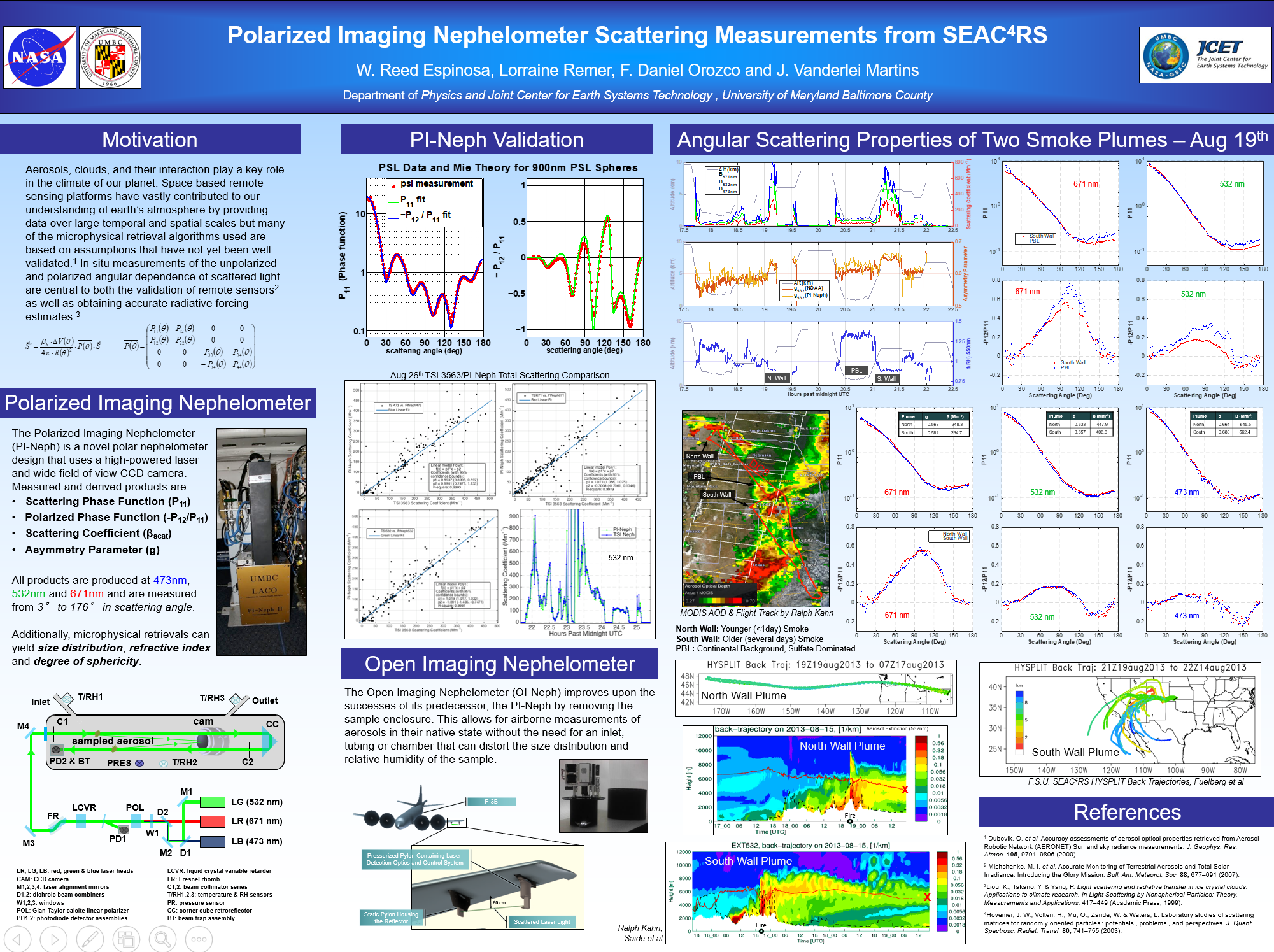 The Polarized Imaging Nephelometer (PI-Neph) is a novel in-situ instrument developed for accurate measurements of the first two matrix elements of the scattering phase function of aerosol particles. The instrument takes in aerosol through an inlet and bombards the sample with a polarized laser beam, at 445, 532, or 661nm, inside a closed chamber. The laser beam is split into forward and backward segments by a retroreflector; a wide field-of-view camera inside the chamber images the intensity of scattered light from 5-175 degrees in scattering angle. The high-resolution phase function measurement from the PI-Neph is used to retrieve aerosol microphysical properties including refractive index, size distributions, sphericity, asymmetry parameter, and single-scattering albedo akin to multi-angle remote sensors.
The Polarized Imaging Nephelometer (PI-Neph) is a novel in-situ instrument developed for accurate measurements of the first two matrix elements of the scattering phase function of aerosol particles. The instrument takes in aerosol through an inlet and bombards the sample with a polarized laser beam, at 445, 532, or 661nm, inside a closed chamber. The laser beam is split into forward and backward segments by a retroreflector; a wide field-of-view camera inside the chamber images the intensity of scattered light from 5-175 degrees in scattering angle. The high-resolution phase function measurement from the PI-Neph is used to retrieve aerosol microphysical properties including refractive index, size distributions, sphericity, asymmetry parameter, and single-scattering albedo akin to multi-angle remote sensors.
The PI-Neph participated in several campaigns, including SEAC4RS and DISCOVER-AQ, aboard the NASA DC-8, P-3B, and B-200 since 2015. The breadth of PI-Neph observations of over biogenic, industrial, marine, and biomass burning aerosol led to an aerosol classification scheme based upon principal component analysis of measured P11 and P12 phase functions. PI-Neph measurements are among the first in-situ observations applied successfully to the Generalized Retrieval for Aerosol and Surface Properties (GRASP) algorithm, which was previously used to retrieve aerosol properties from AERONET and PARASOL observations.
